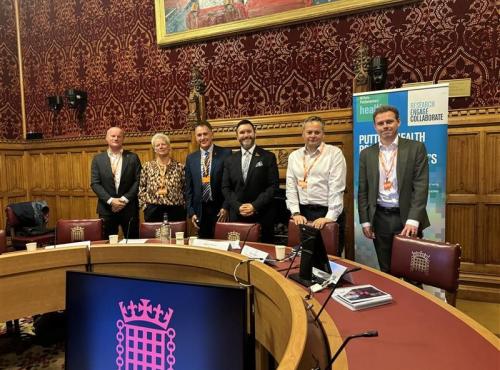Accessible Employment - Why technology could be the key to more jobs for disabled people
In this blog, policy manager Geena Vabulas calls on the next government to prioritise accessibility at work and encourage more employers to get on board.
Of the 7.7 million disabled people of working age in the UK currently, only 4.1 million, or 52.6%, are in employment. The stark difference between this and the employment rate for people without disabilities (81.5%) is known as the Disability Employment Gap, and as Labour noted in their 2017 manifesto, it has remained stubbornly high. Many people become disabled during their working life and with the ageing workforce we expect to see an increase in the prevalence of conditions such as sight loss, hearing loss, and mobility issues that will need to be supported in the workplace. Accessible practices benefit and boost productivity for everyone, and employers need to embrace accessibility to attract and retain talented disabled people.
In 2017, the Conservatives pledged to get one million more disabled people into employment by 2027. The trend towards greater workforce participation has been positive since 2013, which was also the year the Government introduced Disability Confident, a scheme which targets the work environment and specific business practices rather than disabled people themselves. For example, the scheme tackles the culture of fear around hiring disabled people by educating employers on the economic benefits of doing so and raising awareness of programmes that can support both employer and employee such as Access to Work.
Currently over 13,000 employers have signed up to Disability Confident, which demonstrates the real desire of UK employers to be inclusive in their practices. However, the scheme has been criticised as asking too little of employers and lacks the measurement tools required to show change – e.g. participants are not required to report how many disabled people they employ - and the Government has acknowledged that it does not know how many disabled people are moving into employment as a result of the scheme.
Technology has the power to break down barriers for disabled people and the UK is already a world leader in developing assistive technologies. According to Janine King, Managing Director of iansyst, a Disability Confident Leader business, “for an organisation to be truly disability confident and accessible, they need to embrace the enabling power of technology. From screen readers and live captioning services to digital screeners that identify those who need support, technology can and should be a key component in creating accessible work environments and closing the disability employment gap.”
So how does this fit within the new manifestos, and what might the new government do with the scheme? Although the Conservatives have not re-stated their 2017 target of one million more disabled people into employment by 2027, they have pledged to “publish a National Strategy for Disabled People before the end of 2020.” This broad strategy would look into housing, education, transport, jobs and benefits system and would likely be led by the new Cabinet Office Disability Unit. If the Conservatives form a government, we can expect Disability Confident to be continued, and built upon as part of the proposed disability strategy; as the scheme matures, it may come to place more specific and measurable requirements on participating employers
The Labour manifesto makes more specific pledges including the return of specialist employment advisors and a requirement for disability pay-gap reporting for companies with over 250 employees. They have also promised a review of the Access to Work scheme, which funds workplace adjustments for disabled people. Labour have not committed to continue the Disability Confident scheme but it seems highly likely that they would do so – at least in some form – and perhaps administer it through their proposed new Department for Women and Equalities. Moreover, if the pay-gap monitoring policy were implemented, we could see a sharp uptake in businesses joining the scheme to help reduce their pay gaps. A Labour government might also consider using the network as part of their proposed employer disability training programme.
Regardless of who comes out on top following 12th December, the scheme remains an excellent network of British employers with a commitment making their workplaces more accessible and the next government should take advantage of it to ensure disabled people can thrive in their careers.



